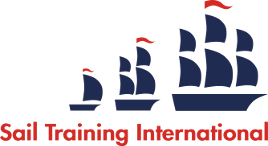The Rule of Rating and Time Correction Factor Explained
How can a traditional Danish gaff-rigged fishing boat built in 1895 ever compete with the state-of-the-art maxi ocean-racer built of exotic materials? How can the largest square-rigger in commission today of over 3,000 tons, race together with either of these craft and stand an equal chance of winning? It is all due to the magic of the Rule of Rating.
In fact it is not so magic, but more of a mathematical formula which has been refined and developed since The Tall Ships Races began. Its success is due to the fact that it has been kept a secret; and only known to the few who have been instrumental in its development. Therefore no competitor has been able to exploit any loopholes that there might be.
A rule of rating is not the same as a handicap system, which is used in a lot of other sailing races and has a subjective human interpretation. A vessel’s ‘form’ or recorded performance will be taken directly into account with a handicap system, whereas a rule of rating relies purely on a set of dimensions and other relevant data being fed into a formula to give a Time Correction Factor (TCF). In round terms the slowest vessel in The Tall Ships Races fleet has a TCF of 0.500 and the fastest yacht would have a TCF of just over 1.000. This figure is simply multiplied to a vessel’s Elapsed Time (Real Time) which produces its Corrected Time and this is how the slowest vessel can theoretically win the race on Corrected Time. This is how the results for each of The Tall Ships Races are calculated.
The Rule of Rating has been remarkably successful in allowing such a diverse racing fleet to compete on an equal footing, and is in itself part of a winning formula which does so much to foster friendship each year amongst a truly international fleet.

